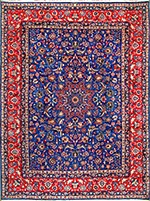Textiles Studies

Textile Research Works
Geometry in Islamic Art
Date of this Version
2016
Document Type
Article
Citation
Bier, C. (2016). Geometry in Islamic Art. In: Selin, H. (eds) Encyclopaedia of the History of Science, Technology, and Medicine in Non-Western Cultures. Springer, Dordrecht. https://doi.org/10.1007/978-94-007-7747-7_10111
Abstract
Geometric patterns in two and three dimensions comprise one of the key characteristics of arts and architecture of the Islamic world in many cultural traditions from the central Islamic lands of the Middle East to Spain, India, Indonesia, and sub-Saharan Africa (Bloom & Blair, 2009; Broug, 2013; Ettinghausen, Grabar, & Jenkins-Madina, 2001; Gerdes, 1999; Hillenbrand, 1994, 2009). Although geometry is present, either by conscious human choice in design or as an inherent feature of architectural production in all cultures, it seems to have assumed a much higher significance in Islamic centers of civilization (Grabar, 1992). Often attributed to a proscription against figural images, this interpretation is not borne out historically with reference to palace wall painting, ceramics, ivory, woodwork, and book illustration rich with pictorial narrative.


Comments
Link requires subscription. Copyright © 2016 Springer.